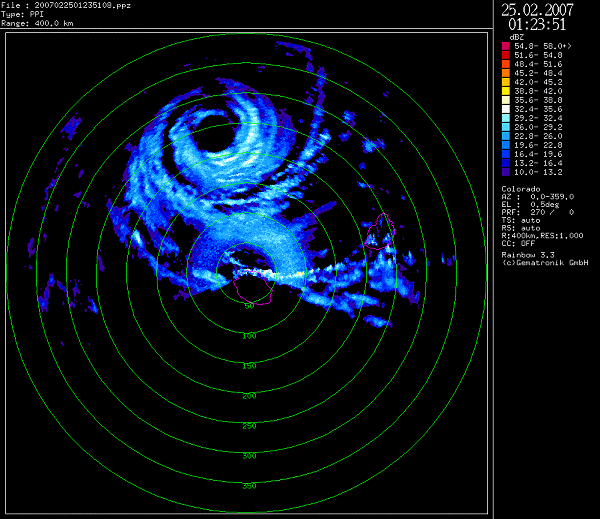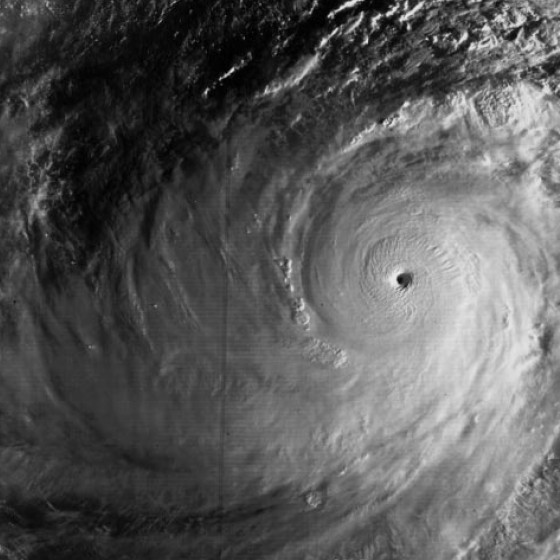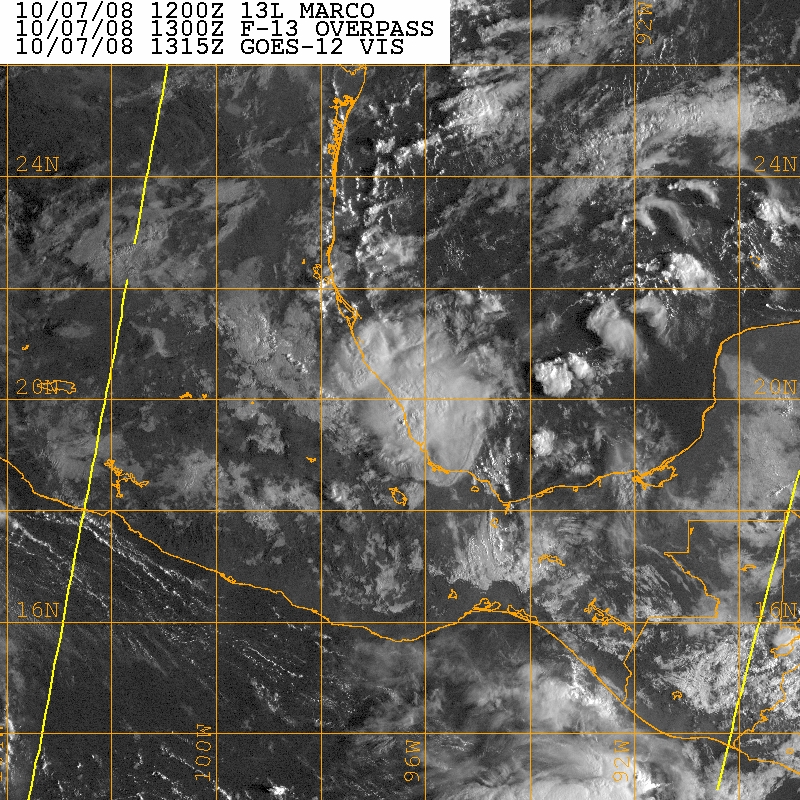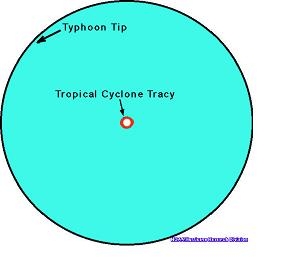
E1) Which is the most intense tropical cyclone on record?
E2) Which tropical cyclone intensified the fastest?
E3) Which tropical cyclone has produced the highest storm surge?
E4) What are the largest rainfalls associated with tropical cyclones?
E5) Which are the largest and smallest tropical cyclones on
record?
E6) Which tropical cyclone lasted the longest?
Contributed by Chris Landsea
Typhoon Tip in the Northwest Pacific Ocean on 12 October 1979 was measured to have a central pressure of 870 mb and estimated surface sustained winds of 85 m/s (165 kt, 190 mph) (Dunnavan and Diercks 1980). Typhoon Nancy on 12 September, 1961 is listed in the best track data for the Northwest Pacific region as having an estimated maximum sustained winds of 95 m/s (185 kt, 213 mph) with a central pressure of 888 mb. However, it is now recognized (Black 1992) that the maximum sustained winds estimated for typhoons during the 1940s to 1960s were too strong and that the 95 m/s (and numerous 83 to 93 m/s reports) is somewhat too high.
Note that Hurricane Wilma's 882 mb lowest pressure (estimated from a dropsonde) in 2005 is the most intense [as measured by lowest sea level pressure] for the Atlantic basin, it is almost 12 mb weaker (higher) than the above Typhoon Tip of the Northwest Pacific Ocean.
While the central pressures for the Northwest Pacific typhoons are the lowest globally, the North Atlantic hurricanes have provided sustained wind speeds possibly comparable to the Northwest Pacific. From the best track database, Hurricane Camille (1969) and Hurricane Allen (1980) have winds that are estimated to be 85 m/s (165 kt, 190 mph). Measurements of such winds are inherently going to be suspect as instruments often are completely destroyed or damaged at these speeds.
Contributed by Chris Landsea
Hurricane Wilma in 2005 went from 954 mb to 901 mb in a 5 hour 23 minute period for a 9.8 mb/hr pressure drop. The winds went from 70 to 82 m/s (130 kt to 160 kt, 150 mph to 184 mph) in that period. Hurricane Beulah in 1967 underwent a 6.33 mb/hr drop over a six hour period.
In the West Pacific, Typhoon Forrest in September 1983 deepened by 100 mb
(976 to 876 mb) in just under 24 hr (Roger Edson, personal communication)
. Estimated surface sustained winds increased a maximum of 15 m/s
(30 kt, 35 mph) in 6 hr and 44 m/s (85 kt, 98 mph) in one day (from 33 to
77 m/s [65 to 150 kt, 75 to 173 mph]).
Contributed by Chris Landsea
The Bathurst Bay Hurricane, also known as Tropical Cyclone Mahina, struck Bathurst Bay, Australia in 1899. According to Whittingham (1958) it produced a 13 m (about 42 ft) surge, but other contemporary accounts place the surge at 14.6 m (almost 48 ft). Fish and dolphins were reported found ontop of 15 m cliffs.
Contributed by Chris Landsea

| Time Period | Amount | Location | Tropical Cyclone | Dates |
| 12 hr | 1144 mm | Foc-Foc, La Réunion | Denise | 7-8 January, 1966 |
| 24 hr | 1825 mm | Foc-Foc, La Réunion | Denise | 7-8 January, 1966 |
| 48 hr | 2467 mm | Aurere, La Reunion | Unnamed | 8-10 April, 1958 |
| 72 hr | 3929 mm | Commerson, La Réunion | Gamede | 24-27 February, 2007 |
| 10 days | 5678 mm | Commerson, La Réunion | Hyacinthe | 18-27 January, 1980 |
Contributed by Chris Landsea
Updated by Neal Dorst
Typhoon Tip had gale force winds (17 m/s [34 kt] (one-minute average wind)) which extended out for 1100 km in radius in the Northwest Pacific on 12 October, 1979 (Dunnavan and Diercks 1980).
Tropical Storm Marco (2008) had gale force wind that only extended out 19 km from its center of circulation (NHC Tropical Cyclone Report). That beats the old record holder, Tropical Cyclone Tracy which had gale force winds extending 50 km from its eye when it struck Darwin, Australia, on 24 December, 1974 (Bureau of Meteorology 1977).
This means that Typhoon Tip's gale force winds covered ~3.8 million square kilometers and Tropical Storm Marco's only 1.1 thousand square kilometers, or 0.03% of Tip's area.

| 
|
| Typhoon Tip | Tropical Storm Marco |

Contributed by Neal Dorst and Anne-Claire Fontan
South Indian Ocean